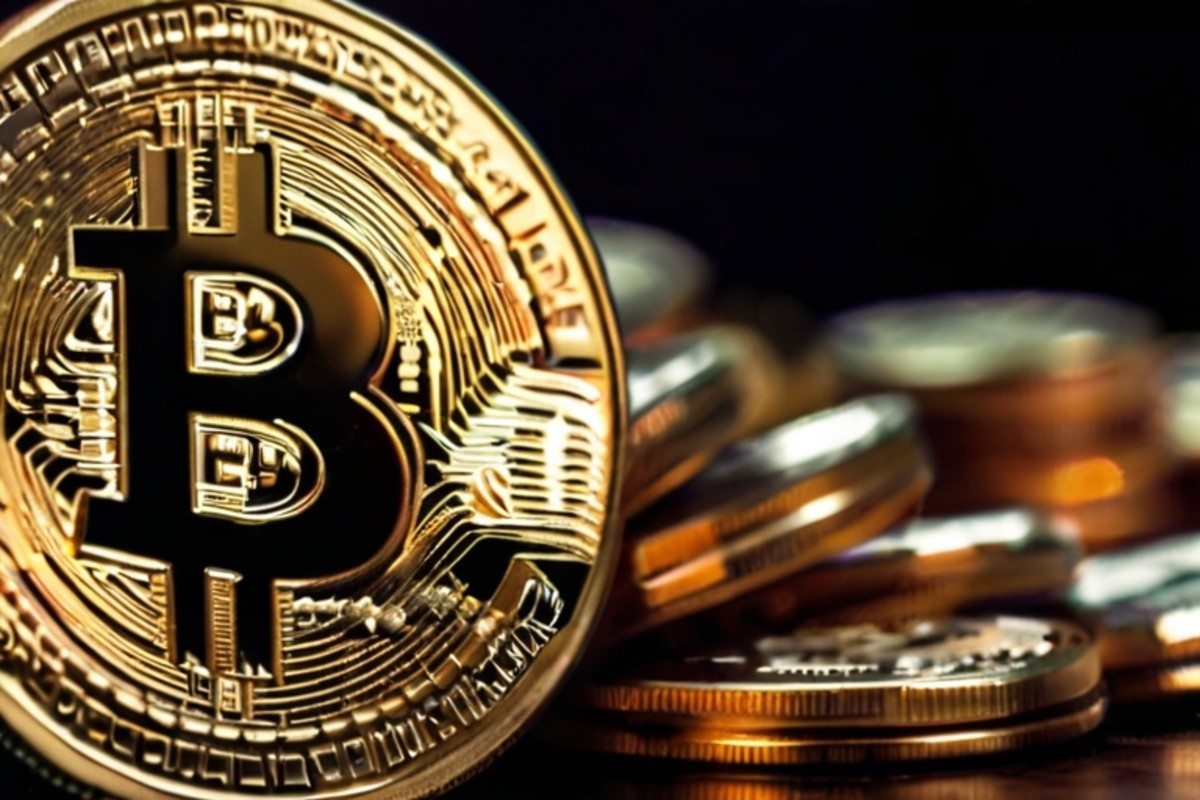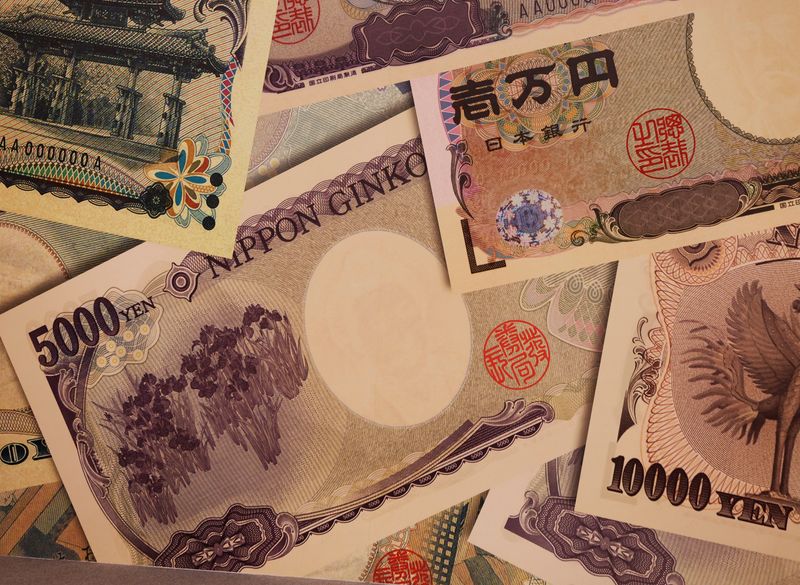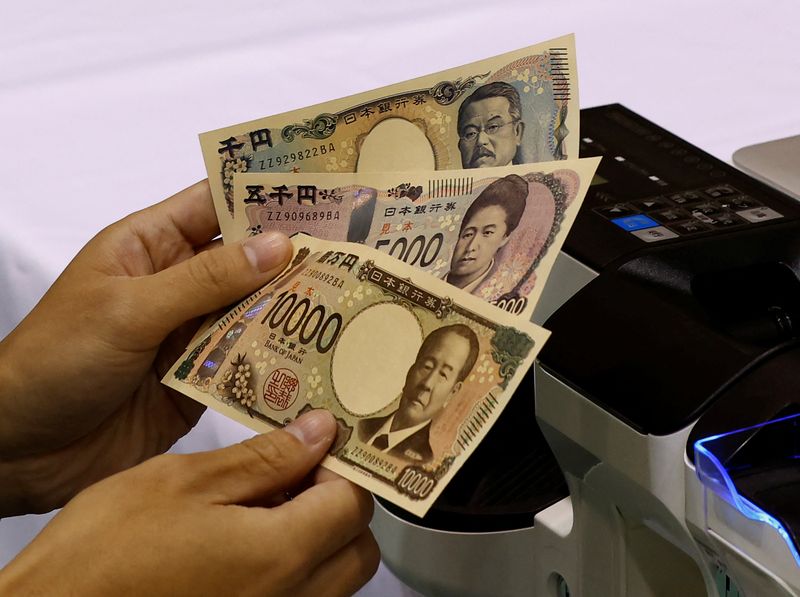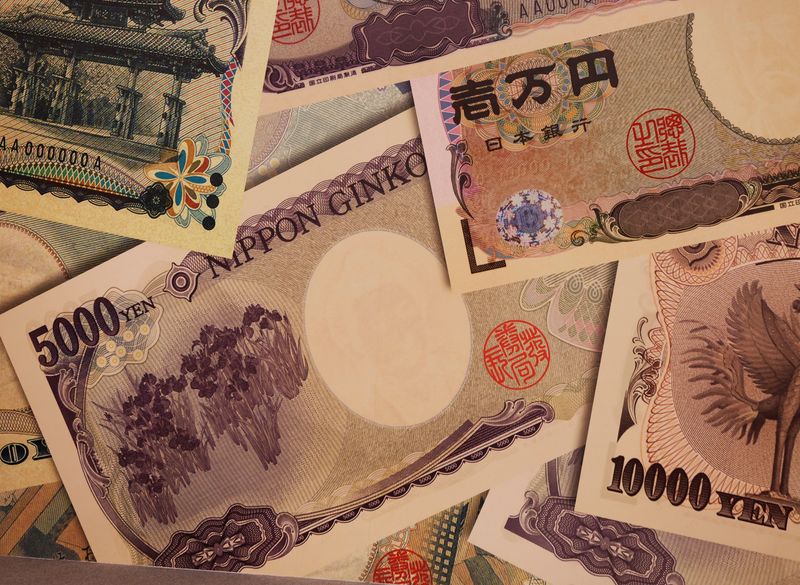Month: April 2024
TD Bank Releases Commercial Explaining The Bitcoin Halving And Promotes ETFs
TD Bank subsidiary TD Direct Investing recently uploaded a video on its YouTube channel explaining in detail the upcoming Bitcoin halving event, expected around April 19 or 20. The commercial serves to educate viewers on the significance of this event within the context of Bitcoin’s supply and demand dynamics.
JUST IN: TD Bank subsidiary releases commercial explaining the #Bitcoin halving and promotes spot Bitcoin ETFs after 👀 pic.twitter.com/a8YTClIhMf
— Bitcoin Magazine (@BitcoinMagazine) April 11, 2024
The video underscores this year’s approval of spot Bitcoin Exchange Traded Funds (ETFs) in the United States, resulting in a surge in demand for bitcoin while the supply remains fixed. With the impending halving, the issuance of new bitcoins per day is set to decrease by half, highlighting the deflationary nature of Bitcoin’s supply schedule. After this halving, Bitcoin’s inflation rate is set to be lower than gold’s inflation rate of ~1.5% on average.
#Bitcoin’s inflation rate will become lower than gold’s post-halving 🤯
There is no second best 🚀 pic.twitter.com/ozYM44IIlA
— Bitcoin Magazine (@BitcoinMagazine) April 11, 2024
TD Direct Investing elaborated on the halving process, explaining that it occurs approximately every four years (or every 210,000 blocks) until the year 2140, by which all 21 million bitcoins will have been mined. The commercial also touches on the historical patterns observed after previous halvings, noting a corresponding increase in Bitcoin’s price post-event.
The release of this educational content by TD Bank signifies a broader acknowledgment and interest in Bitcoin’s economic fundamentals among traditional financial institutions and investors. It reflects a growing awareness of Bitcoin’s limited supply and its potential impact on its value proposition as a store of value.
Click the image to learn more.
As market participants in Bitcoin prepare for the upcoming halving, TD Direct Investing’s initiative to explain this complex concept through an easy to understand media like a commercial is a testament to the evolving discourse around Bitcoin within mainstream finance.
Quality Money: Bitcoin to Become Scarcer than Gold Post-Halving
The Bitcoin Halving: Gold is on Borrowed Time
For the first time since its inception, Bitcoin’s annual inflation rate is poised to become less than that of gold, the quintessential store of value. At Bitcoin block height 840,000, the annual supply of Bitcoin will be cut in half, resulting in a decrease in its annual inflation rate from 1.7% to 0.85%. In comparison, the supply of gold is estimated to increase by 1-2% per year, depending on technological changes and economic conditions.
To date, Bitcoin has experienced three halving events:
November 28, 2012: Bitcoin’s block subsidy decreased from 50 BTC per block to 25 BTC per block.
July 9, 2016: The second Bitcoin halving decreased the block subsidy from 25 BTC per block to 12.5 BTC per block.
May 20, 2020: The third Bitcoin halving reduced the block subsidy from 12.5 BTC per block to 6.25 BTC per block.
The upcoming fourth Bitcoin halving is projected to occur on April 20, 2024 EDT, and with it, the newly supplied bitcoin per block will decrease from 6.25 to 3.125 BTC. This epoch — a period of 210,000 blocks or approximately 4 years – will see Bitcoin’s supply increase by 164,250 BTC (from 19,687,500 to 20,671,875), a mere 328,124 bitcoin from the maximum supply limit of 21 million.
~94% of the total #bitcoin supply has now been issued and the halving is in 11 days 👀
Digital scarcity at its finest 🚀 pic.twitter.com/fjbLs1tq7r
— Bitcoin Magazine (@BitcoinMagazine) April 8, 2024
Gold Throughout the Ages
One benchmark often used to underscore the store-of-value function is that the value of an ounce of gold matches the price of a “fine man’s suit” over time. This principle, known as the “gold-to-decent-suit ratio,” can be traced back to Ancient Rome, where the cost of a top-of-the-line toga was said to be equivalent to an ounce of gold. After 2,000 years, the amount of gold you would pay for a high-quality suit is still close to the price of an equivalent Ancient Roman toga.
While gold has held remarkably true to the expectation of procuring a fine man’s suit for its holders over the years, the lustrous yellow metal does come with its challenges.
For example, the cost of verification – or assaying – gold requires it to either be dissolved in a solution or melted down. This is certainly a challenge for someone who wants to purchase everyday household goods with their hard-fought store of value.
Additionally, the cost and onerous nature of transporting and storing gold itself arguably led to the demise of the gold standard. While certificates of deposit were historically redeemable for gold, the underlying commodity was often rehypothecated, resulting in the infamous ”Nixon Shock” in 1971, when the United States left the gold standard for good.
This is not to mention the risks that come from securing physical gold, its physical nature again proving a risk and liability in serving its function as currency. Executive Order 6102 comes to mind, when then-President Franklin Delano Roosevelt prohibited “the hoarding of gold coin”, highlighting the unique challenge of adequately and privately securing precious metals to store value.
Bitcoin’s Transition from Speculation to Safe Haven?
Initially regarded as a speculative asset due to its notable price fluctuations in the early days, bitcoin has increasingly been adopted as a store of value. Today, investors recognize its potential worth, and superior qualities as a monetary asset. Bitcoin represents the discovery of digital scarcity while offering a range of use cases far beyond those of precious metals.
As such Bitcoin has become a significant force in the economy in just 15 years – reaching a market cap of $1.4 trillion on March 13, 2024.
Source: Glassnode
While this growth cannot be monocausally ascribed to the fact that Bitcoin satisfies the requirements of a store of value better than gold, it is certainly promising. This “magic internet money” continues to rapidly gain on gold’s estimated $15.9 trillion market capitalization.
Gold’s Monetary Qualities: Perfected Digitally
Scarcity: Bitcoin has a finite supply of 21 million coins, which makes it resistant to the arbitrary inflation that ails traditional currencies, and the market-driven supply of precious metals.
Durability: Bitcoin is a purely data-based, immutable form of money. Its digital ledger system uses proof of work and economic incentives to resist any attempts to alter it, ensuring it remains a reliable store of value over time barring unforeseen catastrophic tail risks. Given its informational nature, the ability to store Bitcoin despite the attempts of adversaries to prevent you from doing so is another positive monetary attribute.
Immutability: Once a transaction is confirmed and recorded on the Bitcoin blockchain, it is incredibly difficult, though not impossible, to alter or reverse. This immutability, derived from the geographical distribution of Bitcoin’s network of nodes and miners, is a critical feature. It ensures that the integrity of the ledger is maintained, and transactions cannot be tampered with or falsified. This is especially important in an increasingly digital world, where trust and security are paramount concerns.
Conclusion
Bitcoin’s rise as a monetary good – predictable, free of terminal inflation, and easily transferable – has contributed to it gaining acceptance as a store of value among holders. With the upcoming halving, its scarcity will surpass gold’s for the first time and will likely serve as a wake-up call for market participants seeking to avoid the drag of monetary debasement.
While there are no certainties in life, and especially none in investing, the near-certainty that Bitcoin provides in its ability to maintain the integrity of its 21 million supply cap through its decentralized nature continues to drive adoption one block at a time.
Gold had a good run. But, with the halving on the horizon, it’s Bitcoin’s time to shine.
Chinese Financial Institutions Turn to Hong Kong’s New Bitcoin ETF
The below is an excerpt from a recent edition of Bitcoin Magazine Pro, Bitcoin Magazine’s premium markets newsletter. To be among the first to receive these insights and other on-chain bitcoin market analysis straight to your inbox, subscribe now.
As Hong Kong’s Bitcoin ETF is fast approaching, new applications have come in from an unexpected source: some of the biggest traditional asset managers in Mainland China.
Hong Kong’s new ETF has been in the making for several months now, and it’s been attracting no small amount of interest in the digital asset space worldwide. Not only is its in-kind generation model a totally different protocol than the style of Bitcoin spot ETF popularized by the United States, but it’s also an important foothold for ETF acceptance in East Asia. The already-approved Hong Kong futures ETF’s total assets under management (AUM) already passed the $100 million mark in February, and the spot ETF has performed better in every country where it’s gotten the green light. With this economic region having both substantial capital investment and plenty of international finance connections, Hong Kong would make the perfect candidate for a new testing ground in this market.
Even the most bullish reads on the situation, however, have not predicted the emergence of a new player in this space. By late March 2024, there were a large array of HK-based capital firms that had expressed some form of interest in launching their own ETF, but only a comparative handful had actually submitted a formal application. This situation changed radically on April 8th, when a series of big players from Mainland China threw their hats in the ring. Harvest Fund, with over $230 billion in total AUM, and Southern Fund, with over $280 billion AUM, both filed applications of their own through HK-based subsidiaries. Additionally, local media reported that China Asset Management, with $270 billion in AUM, had its own subsidiary enter into an unspecified partnership with existing Bitcoin ETF providers in the city.
Considering that there are already signs of diminishing ETF hype in the US market, news like this certainly comes as a breath of fresh air. Even if US ETF issuers like BlackRock or Fidelity command several trillion in AUM, the sudden appearance of these multibillion-dollar firms is nothing to sneeze at. It does beg the question, however, of how smoothly interactions between these Mainland firms and Hong Kong financial regulations will actually work together. Isn’t Bitcoin banned in China, with its use among Chinese citizens almost fully underground? How long will a partnership like this actually last? As it turns out, the blanket ban is somewhat overstated in Western media. After all, if Bitcoin was purely contraband in China, why would Chainalysis report $90 billion worth of transactions in one year?
Mainland China has certainly taken a harsher attitude toward Bitcoin in recent years, to be sure. After the Bitcoin mining ban in 2021, one of the largest worldwide hubs for mining dried up practically overnight. However, the apparent crackdown leaves many windows open to the market. Essentially, the main goal for Chinese authorities has been to raise the bar to entry and make it more annoying and difficult for average citizens to continue accessing this market. Additionally, with many legitimate businesses unable to operate, Chinese Bitcoiners are given an implicit warning: “If you get scammed, don’t expect our help or sympathy.” Nevertheless, savvy adherents have found ways to continue using their leaderless currency, and these quiet trades evidently amount to many billions.
It’s that same ambiguous attitude that makes these new ETF developments so encouraging. Three of the largest asset managers in all of China have signed onto the project in quick succession, and it’s no small commitment; if these firms become ETF issuers, they’ll be entangled in a business with record-breaking trade volumes and broad international interest. It would hardly be the first time that Chinese capital firms have invested heavily in Bitcoin-related ventures, but mining hardware in faraway Ethiopia is very different from financial instruments in a city that’s legally part of China. By making this leap, these firms have found a way to legally entangle themselves with the world of Bitcoin, and the entanglement will even predominantly involve Chinese citizens.
Click the image to learn more.
Such a move could do a great deal to show both investors and regulators that the world of Bitcoin is nothing to fear but instead a very exciting opportunity. Hong Kong’s aforementioned in-kind model means that new buyers will have to trade custodied Bitcoins for a corresponding share in the ETF instead of merely purchasing it with fiat. In other words, there will be an undeniable and direct link between prestigious national businesses and a trade that operates largely out of sight. Could this link convince party officials that Bitcoin has a place in China after all? Will the ETF issuers try to throw their weight around and lobby for Bitcoin’s re-entry into the legal system? How will the complicated relationship between the PRC and Hong Kong impact the entire arrangement?
As far as Hong Kong’s side of the arrangement is concerned, they seem quite committed to the dream of creating a regional crypto hub. Not only have local banks shown an increasing acceptance of the digital asset space as a whole, but this is small potatoes compared to the news from HashKey Global. The South China Morning Post reported on April 8th that HashKey Group, an HK-based exchange that only deals in Bitcoin and Ethereum, opened off its new “Global” initiative with an exchange based in Bermuda. HashKey announced this plan at the Web3 Festival, and the Bermuda operations are set to be just the first step in an ambitious undertaking: the long-term hope is to “overtake US-based crypto giant Coinbase in trading volume within five years.” A very tall order.
And yet, Chief Operating Officer Livio Weng did not seem particularly concerned, telling the Post that “We have seen their data and we don’t think that’ll be difficult”. He added that most global competitors are either “easy to use but not compliant”, or “compliant but hard to use”, and the challenges of Chinese regulation have given his company a substantial leg up in this department. It’s been difficult to offer a practical and enticing service to customers while still maintaining regulatory compliance, so the laxer restrictions worldwide will make HashKey a big fish in a small pond. For example, the Bermuda exchange is already set to offer nearly 20 more digital assets than the original Hong Kong operation. Chinese citizens living abroad are also a definite target demographic.
This sort of enthusiasm is certainly a bold statement in the world of Bitcoin! Even in a chaotic market like this, the exchange business’ reigning champs won’t be overthrown easily. Yet, this sort of confidence was reportedly mirrored by the other attendees at the Web3 Festival, as the whole community has pinned its hopes on a rising Bitcoin price. Mainland firms are showing a real willingness to enter the world of Bitcoin through Hong Kong, and the city’s own existing firms are confident that they’ll be worth many billions in short order. Is it really so difficult to imagine that a success here could change the whole paradigm for China?
It’s for these reasons that the upcoming Bitcoin ETF in Hong Kong is so hotly anticipated by observers worldwide. A new spin on the same financial instrument could shake up the entire paradigm, bringing lifeblood to ETFs internationally. However, if China reverses its hostility towards Bitcoin, it could frankly be an even bigger upset than the spot ETF itself. It’s for these reasons that we should watch carefully for developments in this space, as it seems likely that the impact will reverberate in one way or another. The signs are all looking bullish for Bitcoin, and the next big opportunity could be just around the corner.
Bitcoin Startups Raised Nearly $1 Billion between 2021 And 2023: Report
Trammell Venture Partners (TVP), based in Austin, Texas, has unveiled its second annual findings from its in-depth research into the burgeoning Bitcoin-native startup and venture capital ecosystem.
Despite a notable downturn in crypto venture market investments throughout 2023, TVP’s research highlights a remarkable surge in the Bitcoin startup sector, particularly at the Pre-Seed stage, with a striking 360% year-over-year rise in transaction count.
Contrary to the broader startup landscape experiencing a decline in exit activity to a 10-year low in 2023, Bitcoin-native startups showed resilience and growth, marking a 69.2% increase year-over-year. TVP’s data revealed that these early-stage Bitcoin startups collectively raised nearly $1 billion between 2021 and 2023, signifying a substantial interest and investment in this sector.
Christopher Calicott, TVP’s managing director and founding partner, commented on the findings, noting a strong desire among founders to build on Bitcoin. He highlighted the increasing support infrastructure and technical advancements that are fueling innovation within the Bitcoin ecosystem.
“The early indicators from the TVP research are in line with the expectations we have had for ‘crypto’ venture’s end state: founders really want to be building on Bitcoin specifically,” said Calicott. “With a rapidly growing array of tech enablements fueling enhanced scalability and buildability on Bitcoin, this long-held TVP hypothesis is becoming an evidence- and data-supported reality.”
In 2023, Bitcoin-native venture deal count grew significantly, rising 69.2%, while broader crypto venture deal counts were down 35.3%. Though with the increase in Bitcoin-native venture deals, crypto venture deals still account for the overwhelming majority of deal count and venture dollars invested.
“Due to cyclicality and bitcoin’s institutional embrace, its market cap dominance is even greater than at the time of our 2023 report,” Calicott continued. “Despite this, allocation to Bitcoin-native venture capital remains very low, relatively speaking. We believe that delta will begin to close as more allocators start to see the compounding benefits from a rapidly expanding design space on Bitcoin thanks to these early-stage Bitcoin startups.”
TVP’s commitment to driving insights and research for the venture capital landscape led to the launch of the industry’s first dedicated Bitcoin-native ecosystem-focused fund series in 2021. This annual release of TVP’s Emerging Bitcoin-Native Venture Capital Landscape Research Brief aims to provide valuable data and support for institutional investors looking to explore opportunities within the growing Bitcoin startup sector.
The full TVP Bitcoin startup ecosystem research brief is available for download, offering a comprehensive overview of the evolving landscape and investment opportunities in Bitcoin-native technologies.
Wall Street Is Buying US Spot Bitcoin ETFs: 13F SEC Fillings
The latest 13F filings with the SEC reveal that major institutional investors have been acquiring shares in the new spot bitcoin ETFs that launched this quarter.
JUST IN: Wall Street firms with a combined $15 BILLION in AUM bought exposure to #Bitcoin ETFs in Q1
This is just the beginning 💥 pic.twitter.com/MQ1TZp8tQp
— Bitcoin Magazine (@BitcoinMagazine) April 11, 2024
Companies that manage over $100 million in assets are required to disclose their equity holdings quarterly through 13F filings. Bitcoin investors have eagerly awaited these filings to see who is buying into the long-awaited Bitcoin ETFs.
The Q1 2024 13F filings released this month provide the first glimpse into institutional spot bitcoin ETF positions. While allocations remain small, the purchases signal growing conviction in Bitcoin’s investment merits.
Among the largest buyers, $9.9 billion AUM Park Avenue Securities LLC bought into Grayscale’s GBTC, while $1.3 billion Inscription Capital LLC also acquired shares.
Other institutions like American National Bank and Wedmont Private Capital purchased positions in spot bitcoin ETFs. The purchases ranged from a few thousand dollars to hundreds of thousands of dollars.
Still, across the board, major wealth managers, family offices, banks, and investment funds are still nibbling on spot bitcoin ETF exposure. This shows that despite Bitcoin’s volatility, it is passing institutional due diligence.
Further, the 13F filings provide snapshots in time. Q2 filings will offer further insight when released in August. Wall Street is clearly growing more comfortable with Bitcoin, and this steady adoption by giants could well persist.
Dollar: Higher oil prices support the U.S. dollar, says BofA
Post Content
Explainer-Why is the Japanese yen so weak?
Post Content
Explainer-What would Japanese intervention to boost a weak yen look like?
Post Content
Japan says it won’t rule out any FX action as yen hits 34-year low
Post Content
Asia FX weak as dollar hits 5-mth high on hot CPI; yen intervention in focus
Post Content









